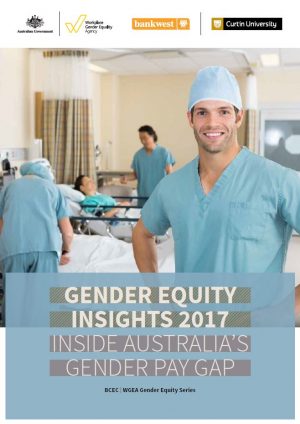Gender balance in leadership drives reduced gender pay gaps

Bankwest Curtin Economics Centre (BCEC), in collaboration with the Workplace Gender Equality Agency (WGEA) today released a report revealing top tier female managers in Australian organisations earn on average $93,000, or 26.5 per cent, less per year compared to their male counterparts.
Gender Equity Insights 2017: Inside Australia’s Gender Pay Gap, the second in the BCEC|WGEA Gender Equity Insights series, also outlines a measurable link between a gender-balanced leadership team and reduced gender pay gaps.
The analysis of WGEA’s world leading data by the BCEC explores gender pay gaps across over 12,000 reporting organisations that capture more than 4 million Australian employees.
The report explores how gender pay gaps vary across industries and occupations, and also includes special investigations on gender pay gaps for graduate program participants, workforce gender segregation and the impact of changing the gender balance in senior leadership over time.
Report author and BCEC Principal Research Fellow Associate Professor Rebecca Cassells said the report outcomes were a stark indicator of the different ways women and men engaged with the workforce, and how their respective contributions are valued.
“Not only do female-dominated organisations tend to be lower paid, but this analysis shows that in workplaces with heavily female-dominated management teams there are large gender pay gaps in favour of men,” Associate Professor Cassells said.
“It seems that where the men are few, they are more highly valued.”
Report co-author and BCEC Director Professor Alan Duncan said the findings present some of the strongest empirical evidence to date that improved gender pay outcomes are driven by companies promoting greater gender equity in senior leadership roles.
“Organisations that increased the share of women in executive leadership roles by more than 10 per cent between 2015 and 2016 recorded a reduction in the organisation-wide gender pay gap of 3 percentage points over the course of a single year,” Professor Duncan said.
WGEA Director Ms Libby Lyons said it was time to challenge the way we think about work.
“This report shows that regardless of the industry they choose to work in, women are worse off than men when working full-time,” Ms Lyons said.
“The analysis is clear: gender-balanced workplaces and gender-balanced leadership teams lower the gender pay gap.
“We must address the stereotypes dictating the work women and men ‘should’ do, if Australia is to meet the social and economic challenges in the decades ahead.”






